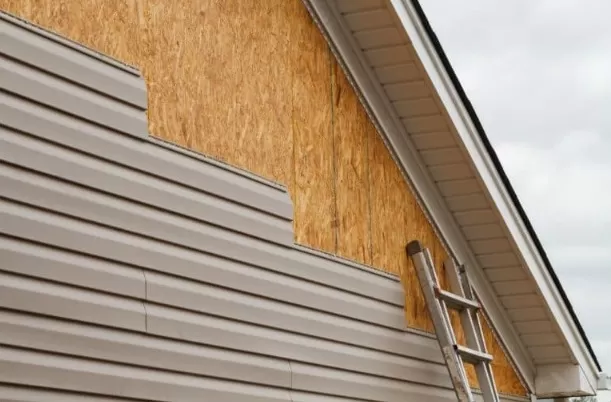Property Purchase Precautions: Warning Signs to Consider. While attending Open Houses can be valuable, it’s important to supplement this experience with professional inspections, especially for major concerns like structural issues, electrical systems, plumbing, or roof condition. Hiring a qualified home inspector can provide a more comprehensive evaluation of the property and help uncover hidden problems that may not be apparent during an open house.
In summary, attending open houses allows home buyers to gather important information about a property. By being observant, engaging with the listing agent, and conducting a thorough visual assessment, buyers can spot potential issues, assess the neighborhood, and make more informed decisions before making a purchase. Remember to combine the information gathered at open houses with professional inspections to ensure a thorough understanding of the property’s condition.
Unveiling Secrets: Exploring The Open House Experience

Every Sunday, in neighborhoods throughout the nation, real estate agents enthusiastically organize open houses for the properties they have listed.
While many attendees use these two-hour events as a source of inspiration for home decoration, agents leverage them to expand their network and establish connections with potential buyers. However, open houses offer more than just creative ideas and networking opportunities.
They provide an ideal setting for prospective buyers to casually explore a property, pose inquiries, and evaluate its suitability.
Prior to an open house, sellers invest considerable effort into enhancing the appearance of their home.
Occasionally, they may even attempt to conceal underlying issues, especially in older properties, that could impede its sale. Thus, when attending an open house, it is essential to remain observant and be on the lookout for seemingly insignificant house characteristics that may indicate hidden information or potential difficulties awaiting the future homeowner.
By paying attention to these subtle cues, you can safeguard yourself against surprises and ensure a smooth path to your new abode.
Indications of Termite Troubles: Examining the Proximity of the Yard to the Siding
Upon approaching a prospective home, it is crucial to pay attention to the distance between the bottom lap of the house’s wood siding and the soil.
If this distance measures less than 6 inches, it raises concerns about the property’s vulnerability to termite infestation. These subterranean creatures possess a knack for seeking out the most direct paths to access a house, where they proceed to feast upon its structural components. Given their destructive nature, homeowners are strongly advised to enlist the services of reputable pest control companies, such as Terminix, to address any termite issues promptly.
It is important to note that under no circumstances should the soil be heaped against the siding of the house.
This practice increases the risk of termite intrusion and should be avoided to safeguard the property’s integrity. By taking these precautionary measures, potential homeowners can mitigate the chances of encountering unwelcome surprises and ensure the long-term stability of their future abode.
The Importance of Step Railings: Mortgage Eligibility and Safety Considerations

When considering the purchase of a home, it is important to understand that certain types of mortgages, such as FHA, VA, and RD, have specific criteria and safety requirements that must be met before approval can be granted.
While the absence of a railing on the steps does not necessarily disqualify a house from being purchased, it is highly likely that installation of a railing will be required before the sale can be finalized.
In addition to step railings, other mortgage requirements may encompass factors such as the absence of peeling paint and a roof in good condition.
If you intend to apply for any of the aforementioned mortgage types, it is advisable to obtain a list of property requirements from your lender prior to attending an open house. This way, you can assess whether the property meets these criteria and make informed decisions during the home-buying process.
By being aware of these mortgage-related considerations and safety standards, prospective homeowners can ensure compliance with lender requirements, prioritize the safety of their household, and effectively navigate the path to securing their desired mortgage.
Indicators of Multiple Shingle Layers: Roof Conditions and Potential Risks
When inspecting a house, a slightly wavy roof can be a sign that there are two layers of shingles present.
While it is generally recommended to remove the existing shingles before installing new ones during a reroofing project, some local building codes allow for up to two layers of shingles. However, there are important considerations to keep in mind when encountering multiple shingle layers.
Firstly, adding a new layer of shingles over an existing layer will void the warranty on the new shingles.
This can have implications for future maintenance and potential issues that may arise. Additionally, the additional weight of the second layer of shingles can place unnecessary strain on the roof structure, potentially compromising its integrity over time.
Furthermore, the presence of multiple shingle layers could also indicate underlying damage to the roof deck that was not properly addressed or repaired.
It is crucial to thoroughly assess the condition of the roof and ensure any potential damage is identified and appropriately resolved before proceeding with a home purchase.
By being mindful of these factors, prospective homeowners can make informed decisions, prioritize the long-term durability of the roof, and mitigate potential risks associated with multiple shingle layers.
Unveiling Potential Hidden Damage: Considerations with Vinyl Siding

The presence of vinyl siding on a house does not automatically imply underlying rot or damage.
In fact, there are high-quality vinyl siding options available in the market today that do not contribute to damage on the siding beneath.
However, it is important to acknowledge that sellers may opt for inexpensive vinyl siding as a means to conceal various exterior issues the house may have, including missing siding, rot, or other forms of damage.
As the age of the home increases, the likelihood of underlying damage beneath the vinyl siding also tends to rise.
To assess the overall maintenance of the house over the years, it is essential to look for additional clues beyond the vinyl siding.
While it is impossible to determine the exact condition beneath the siding without removing it, signs of rot or damage in the attic or basement could indicate a higher possibility of existing damage beneath the vinyl siding.
By considering these factors and evaluating other indicators of maintenance and potential damage, prospective homeowners can make informed decisions and be prepared to address any issues that may arise with the vinyl siding or the underlying structure of the house.
*The information is for reference only.